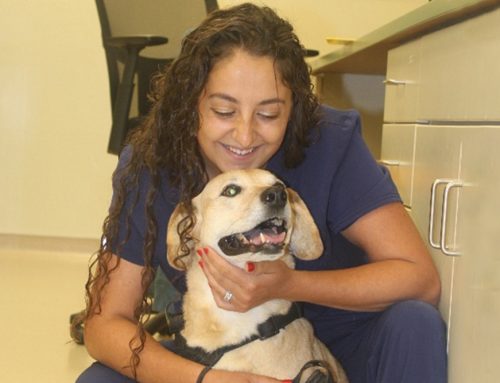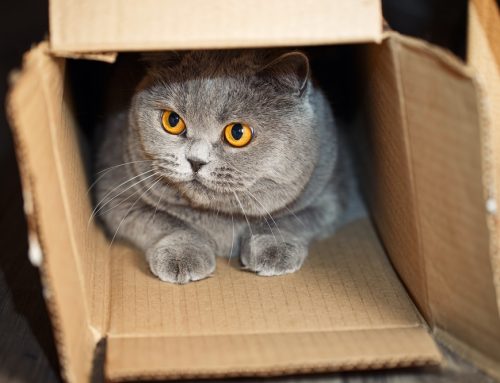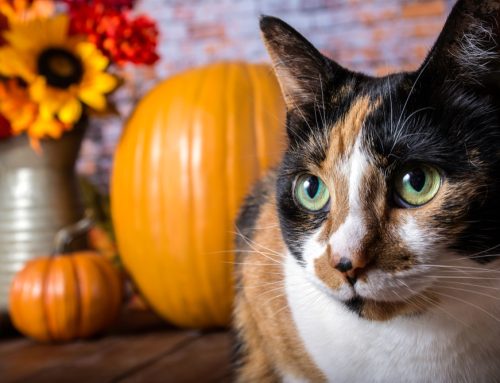Owners of frisky felines know the joy of cozy purrs and often can depend on their four-legged alarm clock to wake them when it’s early morning mealtime. Many cat owners also have experienced the frustration of their cat urinating in locations other than their litter box. Although some cats may be seeking revenge for an empty food bowl, it is also possible that changes in your cat’s elimination habits are an indication they are suffering from a medical problem. Feline lower urinary tract disease (FLUTD) is a complex medical condition that can lead to a potentially life-threatening urethral obstruction in some cases. Our Heritage Veterinary Clinic team answers common FLUTD questions to ensure you can recognize signs and risk factors in your cat.
What is feline lower urinary tract disease in cats?
FLUTD is a painful complex medical syndrome that affects a cat’s lower urinary tract, which includes the bladder, urethra, and urinary opening. FLUTD can be challenging to diagnose because of the variety of underlying causes, some of which may never be determined. Cats can be affected by FLUTD at any age. However, indoor, middle-aged, and overweight cats have an increased risk. Changes in your cat’s environmental or emotional state, including new people, pets, or routines, can be stressful and cause increased anxiety, which is also a FLUTD risk factor. Other risk factors may include:
- Cats who do not regularly drink water
- Cats who do not exercise
- Cats who have a dry food diet
- Cats who do not have a variety of enrichment toys
- Cats who do not have a private area to retreat
- Making frequent trips to the litter box
- Urinating in unusual places, including cold surfaces like tile
- Excessively licking their genital area
- Urinating small amounts, frequently
- Producing bloody urine
- Having difficulty urinating
- Vocalizing in pain during urination attempts
What diseases are associated with feline lower urinary tract disease in cats?
The underlying cause of FLUTD is unknown in more than 50% of diagnosed cats. However, there are several FLUTD-associated diseases, and some cats may have more than one of the following:
- Feline idiopathic cystitis (FIC) — FIC, which causes chronic blade inflammation, is the most commonly diagnosed condition in FLUTD cats younger than 10 years old. This disease is not fully understood and may affect other organ systems. Your veterinarian may recommend several diagnostic tests, such as a urinalysis and blood work, to check overall organ health. Anti-anxiety medications may be required in some cases.
- Urinary tract infection (UTI) — Bacteria, fungi, viruses, or parasites can infect your cat’s urinary tract, causing an increased urgency to urinate, which may result in inappropriate house soiling. A urinalysis and/or urine culture will help determine the presence of a UTI, which, in cats, is most commonly caused by bacteria. Your veterinarian may recommend an antibiotic to treat this condition.
- Urinary stones (uroliths) — A collection of minerals in the urinary tract may lead to urethral or bladder stones. Calcium oxalate and struvite uroliths are the most common. Your veterinarian may recommend a special diet to help dissolve your cat’s uroliths. In some cases, surgery may be required to remove uroliths.
What is a urethral obstruction in cats?
Urethral obstruction is a serious, potentially life-threatening, FLUTD-associated condition that is the result of a partial or full blockage of the urethra. Uroliths, or plugs containing minerals, cells, or mucus-like proteins, can cause partial or total blockages that hinder an affected cat’s ability to urinate properly. Immediately bring your cat in for emergency care if they are unsuccessful during any attempts to urinate. Male cats are most at risk because of their longer, narrower urethra. Death can occur between 24 hours and 48 hours without treatment, which includes dislodging the blockage and treating any associated problems, such as electrolyte imbalances or abnormal kidney function. Cats who suffer from recurring blockages may require a surgery called a perineal urethrostomy (PU) to remove the narrow portion of the urethra so that uroliths can pass. PU surgery is high risk, and often recommended as a last resort.
Can feline lower urinary tract disease or urethral blockage be prevented in cats?

FLUTD, including urethral obstruction, is not always preventable because the underlying cause may not be identified. Yearly, or more frequent, examinations by your veterinary team will help with early identification of FLUTD risk factors, and may reduce the chances of more serious FLUTD-associated problems. Ensuring your cat’s environment is low-stress and avoiding sudden changes in their daily routine also will help prevent FLUTD. Other prevention tips include:
- Providing adequate toys and a properly enriched environment
- Providing clean, fresh water daily
- Cleaning your cat’s litter box a minimum of twice daily
- Decreasing stress with a cat pheromone spray, such as Feliway
- Consulting your veterinarian about the best nutritional options for your cat
- Ensuring your cat is a healthy weight
Owners of frisky felines know the joy of cozy purrs and often can depend on their four-legged alarm clock to wake them when it’s early morning mealtime. Many cat owners also have experienced the frustration of their cat urinating in locations other than their litter box. Although some cats may be seeking revenge for an empty food bowl, it is also possible that changes in your cat’s elimination habits are an indication they are suffering from a medical problem. Feline lower urinary tract disease (FLUTD) is a complex medical condition that can lead to a potentially life-threatening urethral obstruction in some cases. Our Heritage Veterinary Clinic team answers common FLUTD questions to ensure you can recognize signs and risk factors in your cat.
What is feline lower urinary tract disease in cats?
FLUTD is a painful complex medical syndrome that affects a cat’s lower urinary tract, which includes the bladder, urethra, and urinary opening. FLUTD can be challenging to diagnose because of the variety of underlying causes, some of which may never be determined. Cats can be affected by FLUTD at any age. However, indoor, middle-aged, and overweight cats have an increased risk. Changes in your cat’s environmental or emotional state, including new people, pets, or routines, can be stressful and cause increased anxiety, which is also a FLUTD risk factor. Other risk factors may include:
- Cats who do not regularly drink water
- Cats who do not exercise
- Cats who have a dry food diet
- Cats who do not have a variety of enrichment toys
- Cats who do not have a private area to retreat
- Making frequent trips to the litter box
- Urinating in unusual places, including cold surfaces like tile
- Excessively licking their genital area
- Urinating small amounts, frequently
- Producing bloody urine
- Having difficulty urinating
- Vocalizing in pain during urination attempts
What diseases are associated with feline lower urinary tract disease in cats?
The underlying cause of FLUTD is unknown in more than 50% of diagnosed cats. However, there are several FLUTD-associated diseases, and some cats may have more than one of the following:
- Feline idiopathic cystitis (FIC) — FIC, which causes chronic blade inflammation, is the most commonly diagnosed condition in FLUTD cats younger than 10 years old. This disease is not fully understood and may affect other organ systems. Your veterinarian may recommend several diagnostic tests, such as a urinalysis and blood work, to check overall organ health. Anti-anxiety medications may be required in some cases.
- Urinary tract infection (UTI) — Bacteria, fungi, viruses, or parasites can infect your cat’s urinary tract, causing an increased urgency to urinate, which may result in inappropriate house soiling. A urinalysis and/or urine culture will help determine the presence of a UTI, which, in cats, is most commonly caused by bacteria. Your veterinarian may recommend an antibiotic to treat this condition.
- Urinary stones (uroliths) — A collection of minerals in the urinary tract may lead to urethral or bladder stones. Calcium oxalate and struvite uroliths are the most common. Your veterinarian may recommend a special diet to help dissolve your cat’s uroliths. In some cases, surgery may be required to remove uroliths.
What is a urethral obstruction in cats?
Urethral obstruction is a serious, potentially life-threatening, FLUTD-associated condition that is the result of a partial or full blockage of the urethra. Uroliths, or plugs containing minerals, cells, or mucus-like proteins, can cause partial or total blockages that hinder an affected cat’s ability to urinate properly. Immediately bring your cat in for emergency care if they are unsuccessful during any attempts to urinate. Male cats are most at risk because of their longer, narrower urethra. Death can occur between 24 hours and 48 hours without treatment, which includes dislodging the blockage and treating any associated problems, such as electrolyte imbalances or abnormal kidney function. Cats who suffer from recurring blockages may require a surgery called a perineal urethrostomy (PU) to remove the narrow portion of the urethra so that uroliths can pass. PU surgery is high risk, and often recommended as a last resort.
Can feline lower urinary tract disease or urethral blockage be prevented in cats?

FLUTD, including urethral obstruction, is not always preventable because the underlying cause may not be identified. Yearly, or more frequent, examinations by your veterinary team will help with early identification of FLUTD risk factors, and may reduce the chances of more serious FLUTD-associated problems. Ensuring your cat’s environment is low-stress and avoiding sudden changes in their daily routine also will help prevent FLUTD. Other prevention tips include:
- Providing adequate toys and a properly enriched environment
- Providing clean, fresh water daily
- Cleaning your cat’s litter box a minimum of twice daily
- Decreasing stress with a cat pheromone spray, such as Feliway
- Consulting your veterinarian about the best nutritional options for your cat
- Ensuring your cat is a healthy weight







Leave A Comment